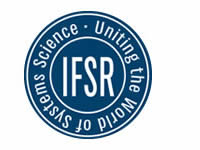Proceedings of the IFSR Conversation 2012, St. Magdalena, Linz, Austria
Systems Paradigms and Praxis
Harold “Bud” Lawson
One can question whether the development of a “language” is the right or only approach to improving systems praxis. Further, one can question what is meant by “language”? Are we talking about an ontology of concepts expressed as terms and relationships?
As Peter Senge (1990) points out in respect to a learning organization, it is personal mastery, mental models, shared vision and team learning based upon systems thinking that are routes to improvement.
In particular the development of mental models and shared vision is related to the usage of paradigms (defining this as patterns based upon models) that express central concepts.
An ontology identifying (labeling) concepts and relationships between concepts such as the Cmap portrayal being developed under the leadership of Jack Ring in the SSWG is one paradigm. While useful an ontology of this form needs to be complemented with additional paradigms that provide deeper insight into the concepts, collections of concepts as well as underlying principles.
If there are too many concepts as in many of the currently well-known architectural frameworks, the mind boggles. Individuals and teams have a hard time understanding and even agreeing upon what the framework provides.
In my personal experience finding a “limited” (perhaps 5 +/- 2) driving set of concepts that form mental models and provide a basis for shared vision has been a key to improvement of systems praxis.
I would suspect that this is why the ISO/IEC 15288 standard is attractive for systems engineers. It is based upon limited number of level-wise reusable concepts in a system breakdown that individuals and groups can get their mind around. Due to this fact, the concepts remain in the mind while the details are there when needed. The document describes system related processes in a mere 40 pages.
I have often point to what I call “The Arms Length Test”. That is if you take a printed copy of a standard (could also apply to other documents like architectural framework descriptions) and can hold it at arms length for one minute then it might be a useful document to read and to utilize. Is this a useful principle?
I suggest that the most important aspect of improving systems praxis is developing personal mastery and group (team) competence and capabilities in learning to think and act in terms of systems. I further suggest that this is best accomplished by multiple paradigms that not only portray an ontology of concepts that guide thinking but also convey concepts and underlying principles that guide action Lawson and Martin (2008).
How are paradigms that relate concepts and principles expressed as models? Models have several forms (textual, mathematical or graphical). Every form of model is an abstraction of some part of portraying reality from a perspective as well indicated in the ISO/IEC 42010 standard. It is this plurality that establishes the basis for discussion and dialogue that leads to understanding (individually and collectively).
So, I would suggest that the title of this Theme 4 is not correct. It should be something like:
- Towards paradigms for improving systems praxis, or
- Towards establishing a shared vision of systems praxis.
If we really want to revolutionize the perspective of systems praxis, it will require the use of multiple paradigms (not just a “language” based upon an ontology). This perspective that is applicable to science and is as well applicable to engineering was stated quite clearly by Kuhn (1962):
”a scientific revolution is defined by the appearance of new conceptual schemes or
‘paradigms.’ These bring to the fore aspects which previously were not seen or
perceived, or even suppressed in “normal” science, i.e., science generally accepted and
practiced at the time.”
My perspective in conveying multiple paradigms has been presented in the book “A Journey Through the Systems Landscape” Lawson (2010). My personal experience in conveying these paradigms have led to significant results for others in respect to collaboration, co-learning and coevolving.
In conclusion I suggest that it is vital to focus on multiple, but a small number of paradigms in the form of understandable and applicable system related models in improving system praxis. This perspective will be supported during the discussions of this theme.
Reference
Kuhn, T.S. (1962). The Structure of Scientific Revolutions, Chicago, University of Chicago Press.
Lawson, H. and Martin, J. (2008). On the Use of Concepts and Principles for Improving Systems Engineering Practice, INCOSE International Symposium, Utrecht.
Lawson, H. (2010). A Journey Through the Systems Landscape, College Publications, Kings College, UK.
Senge, P.M. (1990). The Fifth Discipline: The Art & Practice of The Learning Organization, Currency Doubleday, New York.
